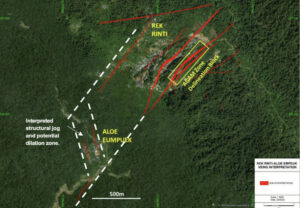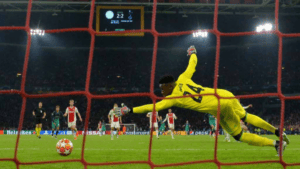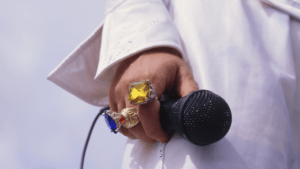Since making mining history with first-ever drilling at its Woyla project in Indonesia less than a year ago, Far East Gold has proven beyond a shadow of doubt that there are gold riches for the taking.
Far East Gold holds four copper-gold and two gold projects across Indonesia and Australia.
Their flagship Woyla Project in Aceh, Indonesia is a highly prospective 24,260 hectare 6th Generation Contract of Work where the company has been focusing much of their recent efforts.
To date, the company has drill tested six of the 12 quartz vein zones it had identified from historical and recent surface mapping within the Anak Perak, Rek Rinti and Aloe Eumpeuk vein system prospects within Woyla.
Its Phase 1 and Phase 2 diamond drilling programs, which are nearly complete, have already returned a significant number of very promising high-grade gold and silver intercepts that defined discrete zones of mineralisation in each vein system – including peak assays of 81g/t gold and 1,359g/t silver.
By the end of the June 2023 quarter, 21 of the 44 Phase 2 holes for which assays have been returned had grades of more than 3.94g/t with 4 returning more than 17.5g/t gold.
Notable intercepts include 0.5m grading 81 grams per tonne (g/t) gold and 734g/t silver from a down-hole depth of 201.2m in hole AGM007 at Rek Rinti, 0.4m at 28.06g/t gold and 957g/t silver from 108.95m (AED007) at Aloe Eumpeuk and 1m at 12.09g/t gold and 8.3g/t silver from 42.2m in APD021 at Anak Perak.
Join an investor briefing with Chairman of Far East Gold, Paul Walker, this Friday 11th August at 11am (AEST) to learn more. Click here to register.
Epithermal veins confirmed
Far East Gold (ASX:FEG) notes that these results confirm that the epithermal veins being explored at both Rek Rinti and Aloe Eumpeuk are largely comprised of massive crystalline quartz that contain narrow zones with ginguro banding that contain fine-grained disseminated gold and electrum, galena, chalcopyrite and black sulphides.
Importantly, they also indicate that the physiochemical process necessary to develop bonanza-grade type mineralisation did occur at Woyla as highlighted by hole RRD004, which returned a 30m intersection at 3.43g/t gold equivalent from 98m including 8.1m at 8.9g/t gold equivalent from 102.4m.
Whilst these results are highly encouraging, it is worth pointing out that drilling has only been carried out over about 2,500m of the more than 13,000m of defined strike for the vein systems, a fact that leaves plenty of room for more mineralisation to be found.
Far East also believes that the textures seen within the Aloe Eumpuek veins are indicative of its potential to contain wider and higher grade zones of gold-silver mineralisation while the high-grade mineralisation intersected to date remains open along strike.
New Woyla developments and activity
Amidst this, the company has also defined the new Kareung Reuboeh prospect area, which hosts two quartz veins with significant gold concentrations that were not previously identified by historical exploration and effectively confirms continuation of the structural corridor between Aloe Eumpeuk and Aloe Rek.
Initial sampling of the quartz stockwork veins at this new area have returned bonanza grade assay peaking at 98g/t gold and 77g/t silver.
Phase 2 drilling is ongoing with the company having drilled 51 holes totalling 8,028m out of the planned 10,000m as of the end of the June quarter.

Map showing interpreted surface extents of the Rek Rinti vein system and Agam zone and the Aloe Eumpeuk prospect area immediately south. Pic: Supplied (FEG).
Resource definition and scout drilling at Rek Rinti, where just three of the eight known vein systems have been tested, continues to intercept high grade gold.
The company has also contracted a detailed UAV magnetic and Lidar survey at 50m line spacing over the Rek Rinti, Aloe Eumpuek and Aloe Rek vein systems and is considering an expansion of the magnetic survey over part of the Beurieung area to assist with defining porphyry targets.
Data from this work will be combined with current drilling information and surface mapping to define and prioritise drill targets.
Previous exploration by Barrick and Newcrest at Beurieung had identified porphyry-related veins and alteration. While plenty of previous exploration has been undertaken here, Far East Gold made mining history as the first ever to drill at Woyla in the project’s history.
Far East has a 51% interest in the 24,260 hectare project, which is held under a sixth generation Contract of Work, in the Aceh region and can increase its stake to 80% by completing a Feasibility Study and defining a maiden JORC resource.
Trenggalek: moving to full control and progress
Whilst Woyla has the lion’s share of the company’s attention, it is by no means the only horse in its stable.
In June, Far East secured a 100% economic interest in the Trenggalek copper-gold project in East Java after completing the conditional share purchase agreement.
The project has seen significant advanced exploration including some 17,786m of drilling, 3,675km of airborne magnetic and radiometric survey, a surface geochemistry survey consisting of more than 10,500 soil and 5,000 rock samples, and induced polarisation resistivity geophysics.
Plans are currently being finalised for a program of detailed mapping and sampling over the Sumber Bening, Singgahan and Sentul-Buluroto prospect areas ahead of initial drill testing of selected epithermal and porphyry-related targets.
Other projects across Indonesia and Australia
During the June quarter, the company received its third and final Technical Approval from the Indonesian Government for the Wonogiri project in Central Java.
These are required as mandatory precondition to receive the environmental authority to develop and operate a mine in the country.
An independent external consultant is currently preparing an updated feasibility study for Wonogiri as part of the process to secure the IUP operation and production permit to allow development and operation of a mine on the site.
While no exploration activity was carried out at its Australian projects during the June 2023 quarter, Far East is considering an initial Phase 1 reverse circulation drill program to effectively test the conceptual porphyry targets at its Mount Clark West project in Queensland’s Connor Arc, which is known to host significant epithermal gold and porphyry-related copper-gold deposits.
In November 2022, Far East had defined an Exploration Target of between 400Mt and 650Mt at a grade of 0.4% to 0.6% copper equivalent for the project along with a conceptual exploration scenario consistent with the occurrence of mineralized porphyry deposits in several regions including the Cadia-North Parkes district in New South Wales.
Join an investor briefing with Chairman of Far East Gold, Paul Walker, this Friday 11th August at 11am (AEST) to learn more. Click here to register.
This article was developed in collaboration with Far East Gold, a Stockhead advertiser at the time of publishing.
This article does not constitute financial product advice. You should consider obtaining independent advice before making any financial decisions.
You might be interested in













